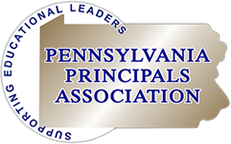Rethinking Principal Evaluation: Nation’s Principals Release New Framework for Policy and Practice
September 13, 2012
Despite the widespread influence of the nation’s 95,000 principals on three million teachers and 55 million students — cited by the Wallace Foundation as second only to teaching among school influences on student success — most state and district frameworks for principal evaluation do not reflect existing standards or proven practices. In the context of federal demands for increased principal accountability, more rigorous teacher evaluation systems and next generation student assessment the country’s school leaders are calling for the adoption of a new set of policy guidelines and best practices that go beyond student test scores to evaluate school culture, professional growth and learning and other aspects of students’ learning environments that are directly influenced by school leaders.
Rethinking Principal Evaluation: A New Paradigm Informed by Research and Practice was introduced today [September 13, 2012] by the National Association of Elementary School Principals (NAESP) and the National Association of Secondary School Principals (NASSP) at a Congressional briefing in Washington, D.C. With the introduction of this research-based framework, the coalition has launched a call to states and districts to adopt a new paradigm including the institution of multiple and meaningful measurement systems of principal and assistant principal effectiveness.
“NAESP has long been at the forefront of establishing standards of principal’s practice through its Leading Learning Communities standards initiative. It is essential to insert the principals’ voice and the standards in the redevelopment or refinement of evaluation systems to change practice to improve schools,” said Gail Connelly, Executive Director of the National Association of Elementary School Principals. “This report was created by principals, for principals and takes the best of their expertise and pairs it with the latest research. Policymakers now have a clear path to follow and must establish principal evaluation systems that will build the capacity of principals to lead our nation’s schools,” Connelly further noted. Developed by a joint committee of practicing principals over the past two years, the report identifies six key domains of school leadership that should be incorporated into principal evaluation systems:
? Professional growth and learning;
? Student growth and achievement;
? School planning and progress;
? School culture;
? Professional qualities and instructional leadership; and
? Stakeholder support and engagement.
Rethinking Principal Evaluation also identifies essential features of comprehensive evaluation systems — including systemic support, flexibility, relevance and utility — and a roadmap for policymakers to follow in the development of these systems. States and districts are encouraged to:
? Consider student, school and community contexts;
? Incorporate standards that can improve practice;
? Use evaluation to build capacity; and
? Focus on multiple measures of performance data.
“Principal evaluation systems can be powerful tools to support the kind of schoolwide improvement efforts NASSP encourages in the Breaking Ranks framework,” said NASSP Executive Director JoAnn Bartoletti. “But those tools must be well constructed and well implemented to evaluate the leadership behaviors that really matter. School improvement is a process, not a destination. So an evaluation tool becomes valuable when it builds a leader’s capacity to advance the improvement process.”
The full report and executive summary is available online.
